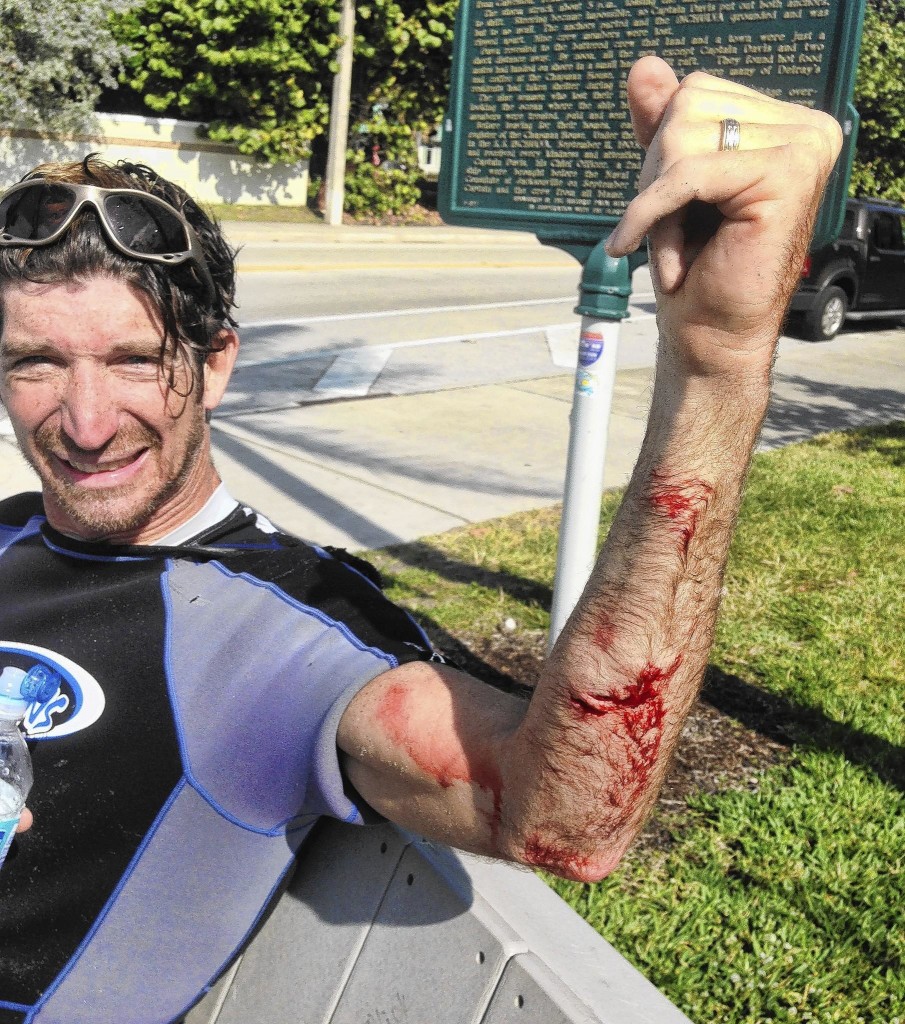VIA – SUN SENTINAL
Beach reopened after shark scare
Swimmers urged to avoid low-visibility water
The beach at John D. MacArthur Beach State Park reopened to swimming Tuesday morning, after having been closed since Saturday because of high numbers of sharks.
“The presence of sharks has diminished but not gone away,” said Mara Burger, spokeswoman for the Florida Department of Environmental Protection.
Hundreds had been seen close to shore at the park in Palm Beach County. Last week a nine-year-old boy on a surf or boogie board at the park suffered a minor bite to his foot and ankle. Off Delray Beach on Saturday a man on a kiteboard suffered a bite to the arm.
The high number of sharks near beaches typically occurs at this time of year, as thousands of migrating sharks swim close to shore on their way north. Gulf Stream Park’s beach was closed and reopened three times on Sunday, as lifeguards ordered swimmers from the water at the sight of sharks.
Off Delray Beach Saturday, Kurt Hoffman was dragging his arm in the water from his kite board when he suddenly felt pressure on his arm.
“It was less than a second,” he said. “It was a hit and a release. It felt like a bear trap. I pulled myself in pretty much like a rocket. And I pulled my feet up because I didn’t want to get bitten again. All I see is blood running down my arm. I yelled ‘Shark bite! A shark bit me!'”
Hoffman, whose company The Kite Doctor repairs damaged kiteboarding kites, suffered 15 to 18 puncture wounds across a seven-inch span. At St. Mary’s Medical Center in West Palm Beach, he was given antibiotics, in addition to treatment for his wound, because sharks’ mouths team with bacteria.
On Friday a nine-year-old boy on a surf board or boogie board was bitten on his foot and ankle, said Lt. Anthony Giarrusso, of North Palm Beach Fire Rescue. He was taken to St. Mary’s for treatment.
Every spring a huge number of blacktip and spinner sharks migrate from their winter homes off Broward and Palm Beach counties north, with many going as far as the Carolinas.
“These two bites sound very much like what you’d expect around this time in South Florida,” said Stephen Kajiura, associate professor of biology at Florida Atlantic University, who gathers data on the migration by air on flights between the Boca and Jupiter inlets. “We have large numbers of sharks that are migrating through here.”
Blacktips and spinners reach a maximum length of six feet, not large enough to see a human being as prey. When they bite someone, Kajiura said, it is typically a case of mistaken identity in murky water.
“If you see a flash in the water, a hand or a foot, it looks like a little fish,” he said. “They’re fish eaters, and they’re going after all these little bait fish, it’s not a surprise that we’re seeing this this time of year.”
The most dangerous sharks for people are the bull, tiger and great white, which account for the largest number of fatalities. Last year Florida led the country in shark bites with 23, none of which were fatal, according to the International Shark Attack File.
In their migrations, blacktips and spinners arrive in South Florida in December and January. No one knows how far south they go, Kajiura said. They extend into Broward County and may go as far south as Miami-Dade County, he said. In March they head north, going to northern Florida, Georgia and the Carolinas, where females give birth to pups.
Gulf Stream Park was closed for very short periods Sunday, as lifeguards watched the water for sharks, said Joe Peloquin, supervisor of lifeguards at southern Palm Beach County beaches. The decision on when to order swimmers out of the water is a judgment call and does not require large numbers of sharks, he said.
“If it’s in close proximity to our swim area, we will close for one shark,” he said.
In Deerfield Beach, where shark migrations have led to closures in prior years, lifeguards have not seen many sharks offshore lately, city spokeswoman Rebecca Medina said.
“We haven’t had any significant sightings at all,” she said. “They’re watching. Their eyes are on the water. The beaches are packed. With the number of spring breakers, they really have to have their guard up.”
[email protected] or 954-356-4535
How to avoid shark bites
Avoid swimming at night, dusk or dawn.
Avoid swimming near inlets, where sediment reduces visibility.
Don’t swim if you have an open wound.
Don’t wear shiny jewelry.
Avoid uneven tanning and bright-colored clothing.
Source: Stephen Kajiura, International Shark Attack File
Blacktip sharks
Where they live: Bays, lagoons, coastal waters worldwide.
What they eat: Fish, small sharks, rays, squid, crabs, octopus, lobster
How they act: A fast swimmer, can be seen jumping out of the water.
How big they are: Up to 6 feet
Commercial value: Caught for meat and fins.
Conservation status: Listed as “near threatened” by International Union for Conservation of Nature due to popularity as a food fish.
Source: Florida Museum of Natural History
For the original source go here:
 Become A Sponsor!
Become A Sponsor!If you have a product or service that is a good fit for our surf community, we have opportunities for you to sponsor this blog! Download our media kit now!

